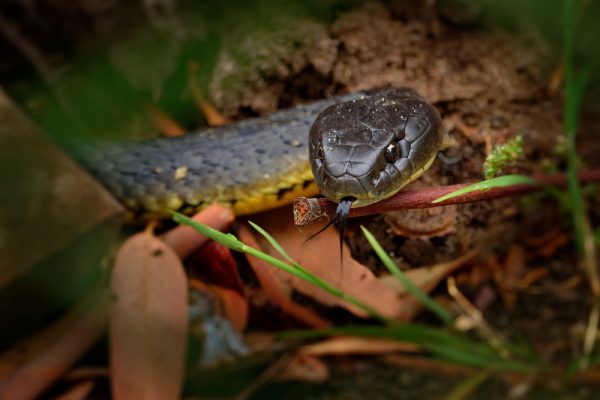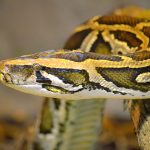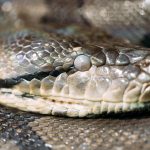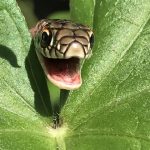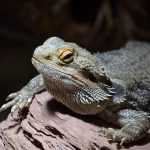Understanding Venomous Snakes in Canada
Venomous snakes can be found in various regions of Canada, and it is important to understand their characteristics and behavior in order to stay safe. One such snake is the Massasauga rattlesnake, which is the only venomous snake species native to Ontario. These snakes are typically found near wetland areas, such as marshes or swamps, where they can easily find prey.
The Massasauga rattlesnake has a distinctive rattle at the end of its tail, which serves as a warning signal when it feels threatened. It primarily feeds on small mammals like mice and voles, using its venom to immobilize its prey before consuming it. While encounters with these snakes are rare due to their shy nature, it is important to exercise caution if you come across one.
Another venomous snake species found in Canada is the Western Diamondback rattlesnake. This species inhabits parts of British Columbia and Alberta but tends to avoid heavily populated areas. They prefer dry grasslands or rocky habitats where they can blend into their surroundings effectively. The Western Diamondback rattlesnake uses heat-sensing pits on its face to detect warm-blooded prey like rodents or birds.
Understanding the habits and habitats of venomous snakes in Canada can help individuals make informed decisions when venturing into these areas. By being aware of their presence and taking necessary precautions such as wearing appropriate footwear and staying on designated trails while hiking, we can coexist safely with these fascinating creatures that play an essential role in our ecosystem without posing a threat to ourselves or them.
The Importance of Snakebite Awareness
Snakebite awareness is crucial for the safety and well-being of individuals living in areas where venomous snakes are present. By being aware of the potential dangers and understanding how to prevent snakebites, people can take necessary precautions to minimize the risk. This includes knowing which species of snakes are venomous in their region, recognizing their habitats, and learning about their behavior.
One of the key reasons why snakebite awareness is important is because it enables individuals to identify venomous snakes accurately. Differentiating between venomous and non-venomous species can be challenging as many harmless snakes resemble their dangerous counterparts. However, with proper knowledge and education, people can learn to distinguish critical characteristics such as head shape, color patterns, or presence of a rattle on rattlesnakes.
Furthermore, snakebite awareness also emphasizes the significance of seeking immediate medical attention after a bite occurs. Prompt treatment is vital as some venomous snakebites can lead to severe complications or even death if left untreated. Knowing how to administer basic first aid measures while waiting for professional help can significantly improve outcomes for victims.
In summary (without using ‘In conclusion’), promoting snakebite awareness plays an essential role in safeguarding communities from potential harm caused by venomous snakes. Through education programs and public outreach efforts, individuals become equipped with valuable knowledge that empowers them to coexist safely with these reptiles while minimizing risks associated with snakebites.
Identifying Venomous Snakes in Canada
Venomous snakes can be found in various regions of Canada, and it is important to be able to identify them accurately. One common venomous snake species in Canada is the Eastern Massasauga Rattlesnake (Sistrurus catenatus). This snake has a distinctive rattle at the end of its tail, which it uses as a warning signal when feeling threatened. Its coloration varies from gray to light brown with dark blotches along its body.
Another venomous snake that can be found in certain parts of Canada is the Western or Prairie Rattlesnake (Crotalus viridis). It has similar characteristics to the Eastern Massasauga Rattlesnake, including a rattling tail and coloration that blends well with its surroundings. However, the Western Rattlesnake tends to have more vibrant markings and can grow larger than its eastern counterpart.
The Northern Pacific Rattlesnake (Crotalus oreganus) is another venomous species found in western parts of Canada. It shares many similarities with other rattlesnakes but can be distinguished by its triangular-shaped head and heat-sensing pits located between its eyes and nostrils.
It’s crucial not only to recognize these venomous snakes but also to understand their behavior and habitat preferences. By being aware of their presence and taking necessary precautions while exploring areas where they may reside, we can minimize potential encounters and ensure our safety as well as their conservation.
Venomous Snake Habitats in Canada
Venomous snakes in Canada are found in a variety of habitats across the country. One common habitat for these snakes is the boreal forest, which stretches across much of Canada’s northern regions. Within this vast forested area, venomous snakes can be found near wetlands and marshes, where they have access to both water sources and abundant prey.
Another important habitat for venomous snakes in Canada is the grassland ecosystem. These open areas provide ideal hunting grounds for these reptiles as they can easily spot their prey and maneuver through the vegetation. Grasslands also offer ample opportunities for basking in the sun, which helps regulate their body temperature.
Additionally, venomous snakes can be found in rocky areas such as cliffs and outcrops. These habitats provide shelter and protection from predators while offering an abundance of crevices where they can hide or hibernate during colder months.
It is crucial to understand that venomous snake habitats are not limited to specific regions but rather encompass diverse ecosystems throughout Canada. By recognizing these different habitats, individuals can better educate themselves on how to coexist with these fascinating creatures while minimizing potential encounters or conflicts between humans and venomous snakes.
Venomous Snakes’ Diets and Hunting Techniques
Venomous snakes in Canada have a diverse range of diets and hunting techniques that allow them to thrive in their respective habitats. These snakes primarily feed on small mammals, birds, reptiles, amphibians, and sometimes even other snakes. The specific diet of each venomous snake species may vary depending on its size, location, and availability of prey.
One common hunting technique employed by venomous snakes is known as ambush predation. They patiently wait for their unsuspecting prey to come within striking distance before launching a swift attack. Venomous snakes possess highly specialized fangs that inject potent venom into their victims upon biting. This immobilizes or kills the prey almost instantly, allowing the snake to consume it without much resistance.
Another hunting strategy observed among some venomous snake species is active foraging. Instead of waiting for prey to come to them, these snakes actively search for food by using their keen sense of smell and heat-sensing abilities. By flicking their tongues in the air and analyzing scent particles collected on special sensory organs called Jacobson’s organs located inside their mouths, they can track down potential meals with remarkable precision.
In summary (without using those words), understanding the diets and hunting techniques of venomous snakes in Canada provides valuable insights into how these fascinating creatures survive and thrive in various environments across the country. Their ability to adapt to different conditions allows them to secure adequate nutrition while ensuring successful reproduction and survival as essential members of our ecosystems.
Venomous Snake Reproduction and Life Cycle
Venomous snakes in Canada have a fascinating reproduction and life cycle. These reptiles reproduce sexually, with males engaging in combat to win the right to mate with females. Once a male successfully mates, he will move on to find other potential partners.
Female venomous snakes typically lay eggs, although some species give live birth. They choose secure locations such as burrows or rotting logs to deposit their eggs or give birth. The number of offspring varies depending on the species, ranging from just a few to several dozen.
After laying her eggs or giving birth, the female plays no further role in caring for her young. Instead, it is up to the newly hatched snakes or live-born babies to fend for themselves from day one. They must quickly learn how to hunt and avoid predators if they are going to survive into adulthood.
As these venomous snakes grow older, they shed their skin periodically throughout their lives. This process allows them to remove any parasites that may have attached themselves and also aids in growth by allowing room for new scales underneath. Shedding occurs more frequently when the snake is younger but becomes less frequent as it reaches maturity.
The unique reproductive strategies and life cycles of venomous snakes highlight their adaptability and resilience within Canadian ecosystems. Understanding these aspects can help us appreciate these creatures’ importance while also promoting conservation efforts aimed at protecting their habitats and ensuring their long-term survival without posing significant risks to human populations.
The Dangers of Venomous Snakebites
Venomous snakebites pose significant dangers to humans and animals alike. The venom injected by these snakes can cause a range of symptoms, from mild pain and swelling to severe tissue damage and even death. One of the primary risks associated with venomous snakebites is the potential for anaphylactic shock, a life-threatening allergic reaction that can occur in some individuals. This highlights the importance of seeking immediate medical attention after being bitten by a venomous snake.
Another danger posed by venomous snakebites is the risk of secondary infections. Snake fangs carry bacteria from their environment, which can be introduced into the wound during a bite. Without proper treatment, these infections can lead to complications such as cellulitis or abscess formation. Therefore, it is crucial to clean and disinfect the wound thoroughly before seeking medical help.
Additionally, certain species of venomous snakes have potent neurotoxins in their venom that can affect the nervous system. These toxins may cause paralysis or respiratory failure if not promptly treated with antivenom medication. It is essential to remember that time plays a critical role in minimizing the effects of venomous snakebites; delays in seeking appropriate medical care increase the likelihood of severe consequences.
Understanding these dangers emphasizes why education about snakebite prevention and first aid measures are vital for individuals living in or visiting areas where venomous snakes reside. By equipping ourselves with knowledge on how to identify dangerous species, practicing caution when encountering them, and knowing how to respond immediately after a bite occurs, we can significantly reduce the risks associated with encounters with venomous snakes.
First Aid for Venomous Snakebites
If you or someone you know has been bitten by a venomous snake in Canada, it is crucial to seek immediate medical attention. However, there are some important steps that can be taken while waiting for professional help to arrive. The first and most important step is to remain calm and keep the affected area still. This will help slow down the spread of venom throughout the body.
Next, it is recommended to remove any tight clothing or jewelry near the bite site as swelling may occur. It’s also essential not to try sucking out the venom or using a tourniquet, as these methods have been proven ineffective and can even worsen the situation.
Applying a clean cloth or bandage over the bite without constricting blood flow can help reduce bleeding and protect against infection. Additionally, keeping the wound below heart level can slow down circulation and limit venom movement.
Remember, these measures should only be taken temporarily until proper medical assistance arrives. Promptly contacting emergency services will ensure that appropriate antivenom treatment can be administered as soon as possible, increasing chances of recovery and reducing potential complications from a venomous snakebite in Canada.
Medical Treatment for Venomous Snakebites
Medical treatment for venomous snakebites is crucial in ensuring the best possible outcome for victims. Upon arrival at a medical facility, immediate assessment and stabilization of the patient’s vital signs are essential. The first step involves monitoring the individual’s airway, breathing, and circulation to ensure they remain stable. If necessary, interventions such as oxygen administration or intravenous fluids may be initiated to support the patient’s condition.
Once stabilized, healthcare professionals will focus on identifying the specific snake species responsible for the bite. This information is critical in determining appropriate antivenom therapy. Antivenom works by neutralizing venom toxins in the body and preventing further damage. It is administered intravenously under close observation due to potential allergic reactions or other adverse effects.
In addition to antivenom therapy, supportive care plays an integral role in managing snakebite cases effectively. Pain management strategies are employed using analgesics such as opioids or nonsteroidal anti-inflammatory drugs (NSAIDs). Wound care includes cleaning and dressing any visible puncture wounds while minimizing movement of affected limbs to reduce venom spread.
By promptly initiating medical treatment with proper identification of snake species and administering appropriate antivenom therapy alongside supportive care measures, healthcare providers aim to minimize complications associated with venomous snakebites and promote optimal recovery for patients.
Conservation Efforts for Venomous Snakes in Canada
Conservation efforts for venomous snakes in Canada are crucial to ensure the survival of these unique and important species. One major focus of conservation is protecting their habitats. Venomous snakes in Canada, such as the Massasauga rattlesnake and the Western diamondback rattlesnake, rely on specific ecosystems for their survival. By preserving these habitats through land management practices and protected areas, we can help maintain viable populations of venomous snakes.
Another important aspect of conservation is public education and awareness. Many people have a fear or misunderstanding about venomous snakes, which often leads to unnecessary harm or even death for these animals. Educating the public about snake behavior, habitat requirements, and safety precautions can help reduce negative encounters between humans and venomous snakes. It also promotes a greater appreciation for these fascinating creatures and their role in maintaining balanced ecosystems.
Additionally, captive breeding programs play a significant role in conserving venomous snake species in Canada. These programs aim to breed individuals that can be reintroduced into the wild or serve as ambassadors for educational purposes. By carefully managing captive populations and promoting genetic diversity, conservationists contribute to the long-term viability of venomous snake populations while reducing pressure on wild populations.
Through habitat protection, public education initiatives, and captive breeding programs, ongoing efforts are being made to conserve venomous snakes in Canada. These actions not only benefit these remarkable reptiles but also contribute to overall biodiversity conservation across our country’s diverse landscapes.
What are venomous snakes?
Venomous snakes are a type of snake that possesses venom glands and fangs, which they use to inject venom into their prey or potential threats.
Are there venomous snakes in Canada?
Yes, there are a few species of venomous snakes found in Canada, such as the Massasauga rattlesnake and the Western rattlesnake.
How can I identify venomous snakes in Canada?
Venomous snakes in Canada can be identified by certain characteristics, such as their rattles (in rattlesnakes) or distinct patterns on their bodies. It’s important to consult field guides or experts to correctly identify venomous snakes to avoid any potential risks.
Where do venomous snakes in Canada live?
Venomous snakes in Canada can be found in specific habitats, including grasslands, wetlands, forests, and rocky areas. They prefer areas with suitable temperatures and prey availability.
What do venomous snakes in Canada eat?
Venomous snakes in Canada primarily feed on small mammals, such as mice, voles, and even birds. Their diet depends on the species and availability of prey in their habitat.
How do venomous snakes in Canada reproduce?
Venomous snakes in Canada reproduce through sexual reproduction, with males and females mating during specific times of the year. The females then give birth to live young or lay eggs, depending on the species.
What are the dangers of venomous snakebites?
Venomous snakebites can be dangerous and potentially life-threatening. The venom injected can cause tissue damage, blood clotting issues, and other systemic effects that require immediate medical attention.
What should I do if I get bitten by a venomous snake in Canada?
If bitten by a venomous snake in Canada, it is important to seek medical help immediately. Stay calm, immobilize the affected area, and try to remember the snake’s appearance for proper identification.
How can first aid help with venomous snakebites?
First aid for venomous snakebites includes immobilizing the affected limb, keeping the victim calm and still to slow the spread of venom, and seeking medical assistance as soon as possible. Do not attempt to suck out the venom or use a tourniquet.
What medical treatments are available for venomous snakebites?
Medical treatment for venomous snakebites may involve the administration of antivenom, which is a specific antidote for snake venom. Other treatments may include pain management, wound care, and monitoring for potential complications.
What are the conservation efforts for venomous snakes in Canada?
Conservation efforts for venomous snakes in Canada focus on habitat preservation, public education, and scientific research. These efforts aim to protect their natural habitats and promote coexistence between humans and these important reptiles.

